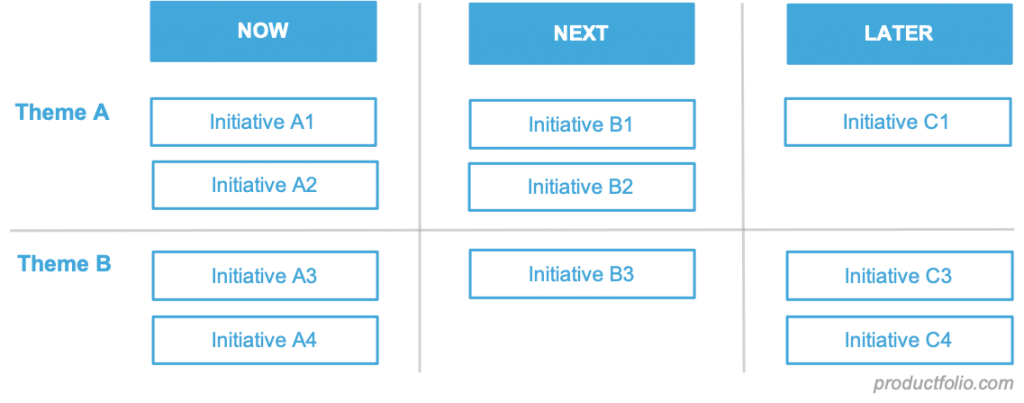What is an Agile Roadmap?
To many people, the idea of a roadmap in Agile is rather counterintuitive. Agile after all, is about keeping things flexible and that document seems to be a hindrance. This view, however, is mainly influenced by the traditional view of product roadmaps.

Agile Roadmap vs. Traditional Roadmap
There are a few factors that differentiate a traditional roadmap from an Agile variant:
Timeline – A roadmap inherently suggests working according to time – at least in many people’s opinions. That’s contrary to what Agile is about. Therefore, Agile roadmaps often ignore timelines. Those that include elements of time, usually approach broadly, not specifically (think months not days). Kanban-style roadmaps, for instance, mainly show development phases, such as Current, Near-Term, and Future, rather than dates.
Change awareness – A greater attention is given to likely changes while creating room for them in Agile roadmapping. The resulting strategic documents provide a hint of the extent of uncertainty that can be expected, making it easier to reduce its impact. Usually, the level of uncertainty will be higher for longer-term items or plans.
Focus – An agile roadmap also differs in terms of its central focus. It’s more concerned with the overall strategy and less with the details. It gives more attention to the long-term, high-level goals, focusing on outcomes in place of outputs. Agile roadmaps emphasize themes and epics instead of just being lists of features. They are strategic plans and not tactical plans.
Revision – The recognition of uncertainty raises the need to regularly update Agile roadmaps in line with current situations. Unlike traditional roadmaps, these documents are reviewed and updated more often. This fact also raises the need to have the right tools to make updating easier.
Why Roadmaps are Important in Agile
Agile comes with many strengths imbued by the flexibility it represents. One challenge however is that Agile is sometimes construed with the absence of longer-range planning, which can leave a team vulnerably to loosing focus and its connection to the primary mission it was setup to achieve. So, longer term planning should not be seen as anti-agile or even optional – we just approach it in a more loosely structured manor that still preserves the agility of the team. With that, it’s worth recapping the reasons why roadmapping is important, even in an Agile context:
Planning
Although we stated earlier that Agile roadmaps are concerned more with the strategy than plans, they are crucial for planning nonetheless. The overall strategy is usually long-term. This high-level document guides the planning of all it takes to execute the strategy successfully. The management and other stakeholders are usually more interested in your long-term visions and how you hope to achieve them.
Communication
Product managers rely on a roadmap to let everyone know the direction they have in sight and how it connects back to the broader strategy. It is a pivot point that facilitates upward communication with business leadership and down to the teams, providing context about what is coming next, and why. The document helps to explain the ‘what & why’ of your planned work or project.
Focus
Roadmaps help Agile teams to focus on what is important. Everyone can easily see when they are going off-course to enable them to retrace their steps. Well-crafted strategic documents make clear the most important themes that need to be worked on first.
Summing It Up
Agile methodology emphasizes flexibility which allows teams to respond and adapt to new learnings from customers and the market – that shouldn’t mean a lack of planning however. An Agile plan identifies key themes/outcomes across the Now, Next, Later horizons, which typically is a 3-6 month horizon. Review your plans every month and update the plan every quarter. It doesn’t need to be exact, nor does it require dates. This sort of planning will strike a balance between the agility of your team and having a clear direction to work toward.